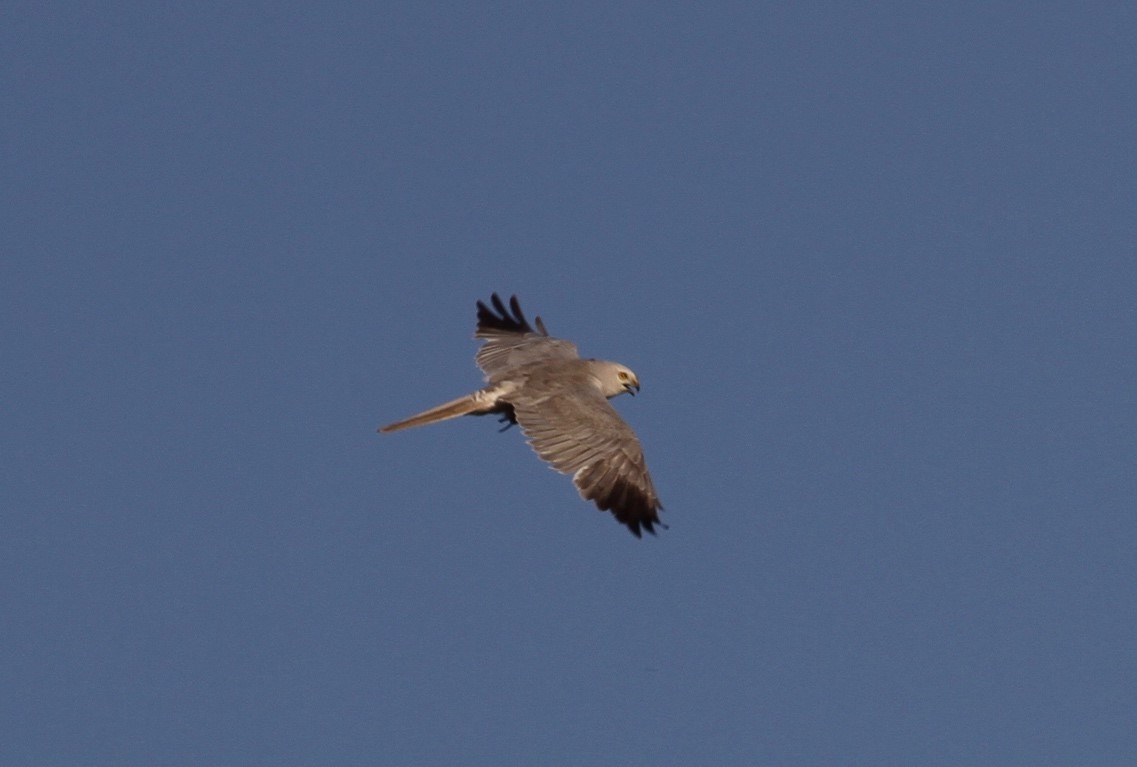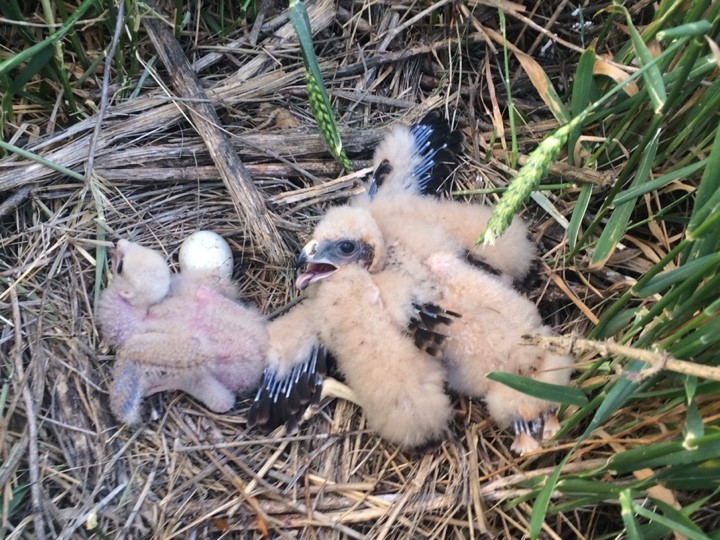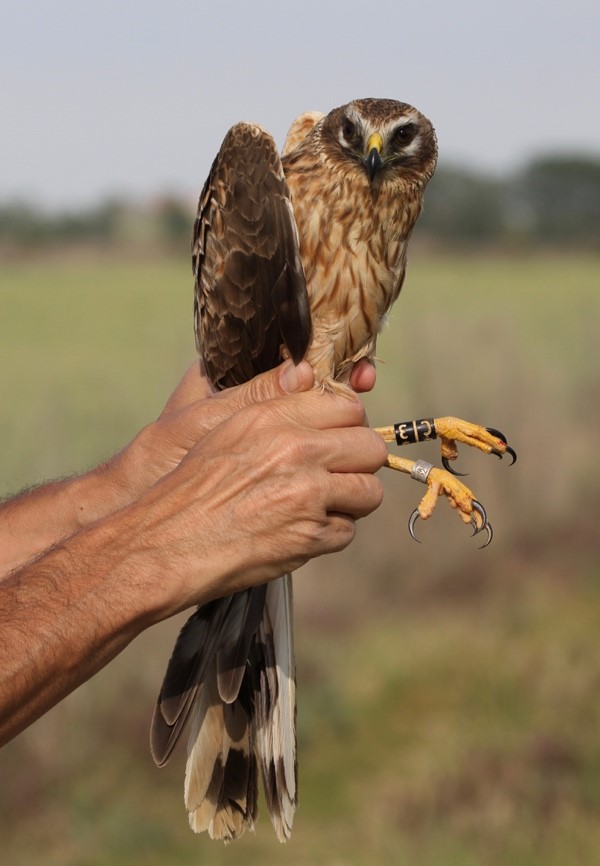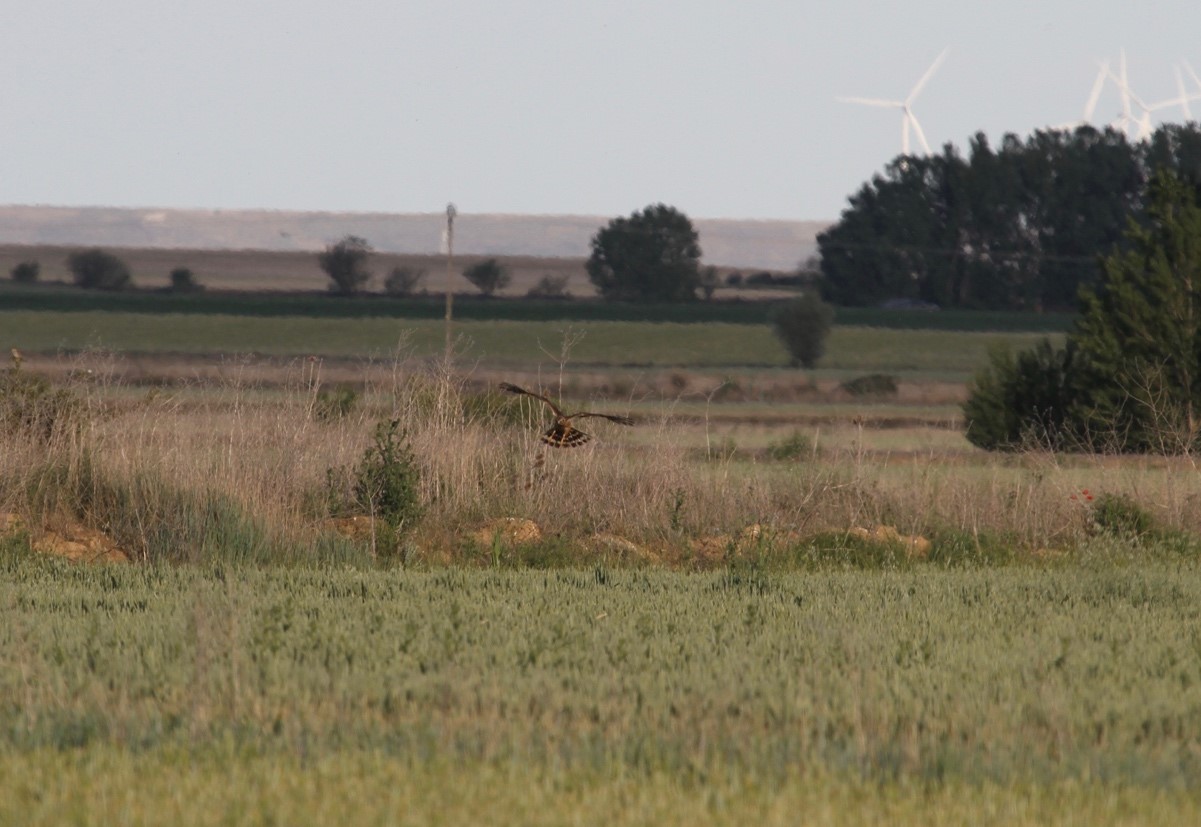François Mougeot and Fernando Jubete Tazo take up the story: Every month since 2005, the Association of Palencia Naturalists (ANPA) carries out raptor counts in the southern part of Palencia province, in Castilla y Léon, north-western Spain. On 1 June 2019, during a morning road transect, we briefly spotted an adult male Pallid Harrier being mobbed by Montagu's Harriers near a small, yet active, colony.
We returned to the spot in the evening and again saw the male Pallid Harrier flying high and chasing a Black Kite – territorial behaviour that made us suspect this bird might have settled here. It subsequently landed on an irrigation pole to rest and preen for about half an hour, before taking off and disappearing from sight.

The male Pallid Harrier in flight on the first day it was seen (François Mougeot).
Much to our surprise, it soon came back with a female Pallid Harrier, which landed in a nearby cereal field with nest material! We visited the area where it landed and soon found a nest with an unhatched egg and two nestlings no older than 10 days, with their beige color typical of Pallid Harrier. The nest was in a wheat field some 50 cm tall, with wet ground due to recent flooding for irrigation.
The male returned with a prey (a vole) and started alarm calling and mobbing us, together with the female, as we left the nest area. From photographs, we later noticed that the female was colour- and metal-ringed, so we returned the following morning to try read the code.

Two chicks and an egg were found in the nest (François Mougeot).
We managed to do so, and after exchanging a few WhatsApp messages with harrier colleagues Julien Terraube, Beatriz Arroyo and Ben Koks, we quickly found out that this female was born and ringed in The Netherlands in summer 2017 (in Groningen province), in what was the first Dutch breeding record of Pallid Harrier and indeed a maiden record for Western Europe. Remarkably, this female turned out to be the first one to breed in Spain.
After obtaining a special permit from the regional government to ring the birds, we revisited the nest area on 15 June and saw only the female (which we trapped to confirm the ring number) and a fledged nestling, which we ringed in the hope that it might be seen again elsewhere.

The female had hatched from Western Europe's first Pallid Harrier nest, in The Netherlands, in 2017 (François Mougeot).

The female hovers above the nest site (François Mougeot).
We found this breeding pair of Pallid Harriers at a time when Common Voles were particularly abundant in the Tierra de Campos region of north-west Spain. Pallid Harriers are vole specialists and also highly mobile birds, characterised by very large breeding dispersal distances. During vole outbreaks, that occur every three to four years, many raptors concentrate in Tierra de Campos, especially vole-specialist predators such as Short-eared Owls, along with generalist predators such as Common Kestrels, Black and Red Kites and Montagu's and Hen Harriers.
Since the discovery of regular breeding Pallid Harriers in Finland in 2011, the number of sightings of the species migrating through Spain has markedly increased. When their preferred small mammal prey is locally abundant, such as during the vole outbreaks of 2019 in Tierra de Campos, some birds may decide to stay and breed. We hope that more breeding records will follow this one in Spain and elsewhere in Western Europe.


